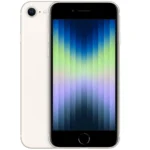Apple’s approach to design extends beyond the shape of its devices to the fonts it uses across its brand. The company has historically placed great emphasis on the typefaces used in its branding, products, and overall typography strategy. Apple’s choice of font is integral to its design aesthetic, enhancing readability and ensuring a clean, minimalist look that’s synonymous with the brand’s image.
The font used by Apple is more than a mere design choice; it is a deliberate element of their brand identity. It has evolved over the years, starting with the Apple Garamond, progressing to the use of Myriad, and eventually, adopting San Francisco as the primary font across its operating systems and marketing materials. This font evolution reflects not just a shift in design trends, but also Apple’s commitment to clarity and functionality in its visual communications.

The Signature Typefaces of Apple
A Legacy of Apple Garamond
For nearly two decades, Apple’s distinct brand identity was closely associated with Apple Garamond. This custom variation of the classic Garamond typeface, characterized by its narrower width and taller x-height, graced Apple’s marketing materials, product names, and website. It was a symbol of the company’s sophisticated and timeless design aesthetic.
The Rise of Myriad
In the early 2000s, Apple gradually transitioned to Myriad for its marketing communications. Myriad, a versatile sans-serif typeface, offered a more modern and approachable feel while maintaining a sense of elegance. While Myriad is not exclusive to Apple, the company uses a modified version called Myriad Set in its marketing materials.
San Francisco: A Font for the Digital Age

With the advent of the iPhone and the growing importance of digital interfaces, Apple introduced San Francisco, a typeface specifically designed for optimal legibility on screens. San Francisco is now the system font for iOS, iPadOS, and macOS, ensuring a consistent and user-friendly experience across Apple devices. It boasts nine weights, including italics, and a range of features for precise typesetting.
Other Notable Typefaces
In addition to its core fonts, Apple has also utilized other typefaces for specific purposes. These include:
- Helvetica Neue: A popular sans-serif typeface used in various Apple apps and websites.
- New York: A serif typeface available on Apple platforms, offering a classic and elegant look.
Table: Apple’s Typography Landscape
| Typeface | Classification | Use Cases |
|---|---|---|
| Apple Garamond | Serif | Historical marketing materials, product names |
| Myriad Set | Sans-Serif | Current marketing materials, presentations |
| San Francisco | Sans-Serif | System font for iOS, iPadOS, macOS, website product names (e.g., “iPhone”) |
| Helvetica Neue | Sans-Serif | Various apps and websites |
| New York | Serif | Available on Apple platforms |
Apple’s choice of typefaces has evolved alongside its products and brand identity. From the classic elegance of Apple Garamond to the modern versatility of Myriad and the digital-focused design of San Francisco, Apple’s typography reflects its commitment to both aesthetics and functionality.
Key Takeaways
- Apple’s design philosophy values the font choice, impacting its brand identity.
- The company has evolved from Apple Garamond to San Francisco for its typography.
- The chosen fonts are used to ensure clear and functional visual communication.
Apple’s Typography and Font Usage
Apple Inc. has developed a distinctive typographic style that is integral to its brand identity. This section explores the typefaces Apple has used, their design features, and how they are applied across various platforms.
Historical Overview of Apple’s Typefaces
Apple’s typographic history began with the Motter Tektura, which was used in its first logo. In 1984, Apple introduced the serif typeface Apple Garamond, which served its brand for many years. The sans-serif fonts, like Helvetica and Myriad, were also central to Apple’s aesthetic before the company developed its own typeface, San Francisco, in 2015.
Design and Characteristics
The San Francisco font, Apple’s current typeface, focuses on clarity and efficiency. It comes in three variants: SF Pro for iOS, iPadOS, macOS, tvOS, and watchOS; SF Compact for watch interfaces; and SF Mono, a fixed-width variant for coding. Each variant is known for its range of weights and a coherent, unified design.
Application Across Apple’s Ecosystem
Typography in Apple’s ecosystem is not just about aesthetics but also about functionality. Fonts like San Francisco for iOS, Lucida Grande for earlier versions of macOS, and New York for certain reading experiences demonstrate Apple’s commitment to consistency and user interface elegance across devices.
Accessibility and Legibility
Apple’s fonts prioritize readability. With variable optical sizes tailored for various displays and contexts, the typefaces maintain legibility even at small sizes. High contrast and adaptive weight help users with visual impairments.
Downloading and Using Apple Fonts
Developers can find Apple fonts like SF Pro and New York in Apple’s Developer Resource Center. These are available for interface design in Xcode and other design applications. However, usage is often restricted to Apple interface development.
Beyond System Fonts: Branding and Marketing
Fonts are a key part of Apple’s visual identity. The use of distinctive typefaces in marketing materials and product design conveys the brand’s style. Even the emoji, like Apple Color Emoji, have a unique design that reflects the overall brand aesthetic.
Font Licenses and Legal Considerations
Using Apple’s fonts outside of Xcode or Apple’s platforms often requires a license. Apple specifies how and where its typefaces can be used, typically restricting them to app and UI development to preserve brand integrity.
Custom Fonts in App Development
Apple’s Human Interface Guidelines suggest using system fonts for speed and readability. However, some applications may use custom fonts for branding or unique experiences. Developers can implement these using tools provided in Xcode and adherence to accessibility standards.
Evolution and Future of Apple’s Typography
Apple’s typefaces have evolved from Garamond to the San Francisco font line. As the company advances, its typography will likely adapt to new technologies and design paradigms while maintaining the core principles of simplicity and legibility.
Comparative Analysis of Apple Fonts with Others
Comparing Apple fonts like San Francisco to others such as Helvetica Neue or Google’s Roboto reveals differences in design philosophy. Apple’s typefaces are designed with a focus on legibility, while others may prioritize versatility or a specific visual style.







